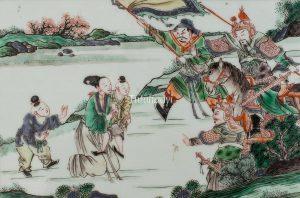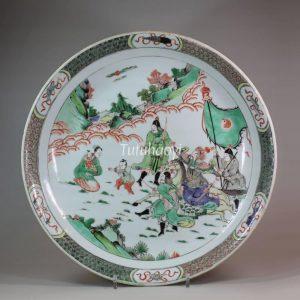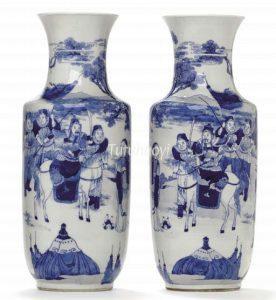The ‘Righteous Aunt’ of Lu
鲁义姑舍子救侄
© Tutuhaoyi.com owns the copyright of the description content for the images attached. Quoting all or part of the description content on this page is permitted ONLY IF ‘Tutuhaoyi.com’ is clearly acknowledged anywhere your quote is produced unless stated otherwise. (本页描述内容版权归Tutuhaoyi.com所有,转发或引用需注明 “Tutuhaoyi.com”, 侵权必究, 已注开源信息的条目除外。)
This is a story of a righteous woman. As the army of the state of Qi (齐国) launched an invasion against the state of Lu (鲁国), soldiers approaching a Lu suburb saw a woman struggling along the road with two children. When the army got closer, she abandoned one of the children and grabbed the other, moving toward the mountains. When the general caught up with her and asked her why she had abandoned one child and run away with the other, the woman explained, ‘I was too weak to protect two children in this calamity. I parted with my own son in order to save my brother’s son; in line with the moral ideal of keeping others’ interests before one’s own.’ On hearing this, the general halted the advance and sent a messenger back to persuade his king not to continue fighting against the Lu, feeling that one could never beat a country in which even an illiterate woman had such high moral values.
The story scene depicted on the porcelain ware displayed in this listing was first deciphered by Dr Yibin Ni.
More story scenes on Morality:
Fig 1-2: famille verte plaque, Kangxi period (1662–1722), Qing dynasty, courtesy of the Jie Rui Tang Collection, photography by William Washburn
Fig 3: blue-and-white porcelain dish, Kangxi period (1662–1722), Qing dynasty, courtesy of The Victoria & Albert Museum, London
Fig 4: famille verte dish, Kangxi period (1662–1722), Qing dynasty, courtesy of Guest & Gray Antique Dealer, London
Fig 5: a pair of blue-and-white porcelain vases, c.1850, courtesy of the Christie’s Auction House, previous collection of Leo & Doris Hodroff




